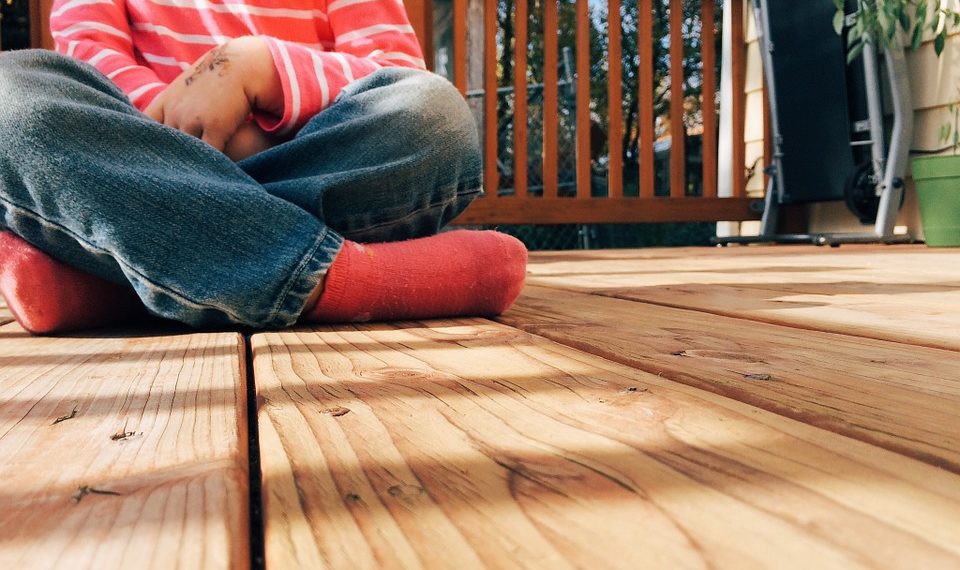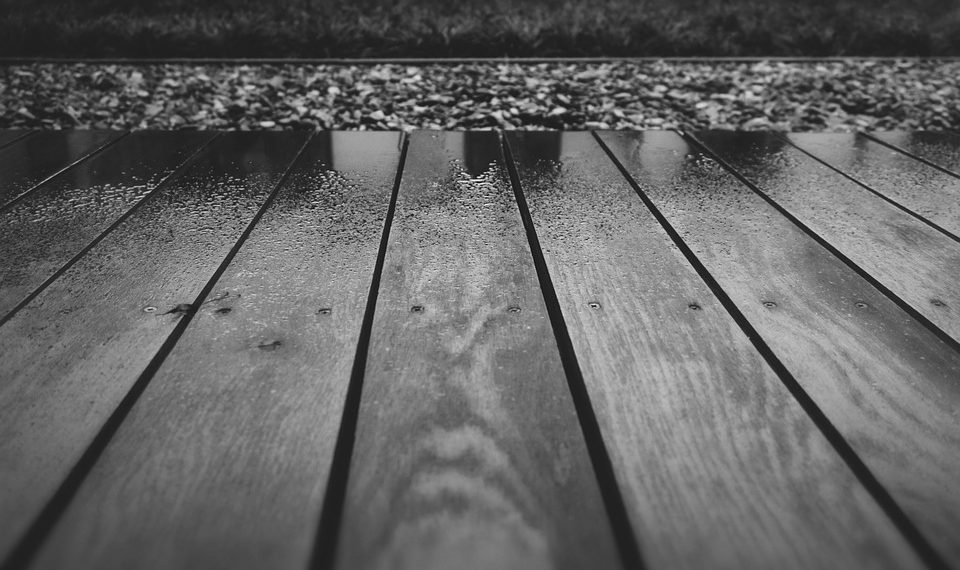HOW DO SLIVERS FORM AND HOW DO I GET RID OF THEM? Wood is a natural material and reacts to weather changes. Horizontal surfaces, such as decks and the top of handrails, are subject to significant traffic and will sliver more readily than vertical surfaces. Wood slivers form when the wood surface is subject to repeated wet/dry cycles which cause the wood fibres to bend and twist. The fibres want to return to their natural shape and in trying to do so, may rise above the original surface. Over time, this movement will form a sliver. While the forming of slivers cannot be stopped, you can minimize slivers by applying a protective coating such as paint, stain or a water repellent that minimizes water penetration into the wood and protects the wood from the sun. If the wood has been exposed to the weather for more than two weeks, sand it with medium grit, garnet sandpaper (80-100 grit sand paper) before applying a protective coating to remove weathered fibres. This will allow for better coating adhesion.
HOW DO I MAINTAIN MY STAINED DECK? Exposure to the elements and foot traffic cause deck surfaces to fade. Horizontal areas such as deck surfaces and handrails wear much faster than vertical deck elements such as spindles. Regular maintenance will help maintain the appearance of your deck and also preserve the wood. A wood stain is used to protect and colour exterior wood surfaces. There are two types of stains: film forming (solid stains) and penetrating stains (transparent and semi-transparent). Stain colour varies because of characteristics in the wood and how the wood is treated prior to staining. Wood characteristics such as density and grain vary from tree to tree and even in boards cut from the same tree. For example, a portion of board that is dense will not accept stain as well as a portion of board that has a more open grain. Wood that is rough sawn, unprimed or very dry may absorb stain more quickly than wood that is smooth cut, damp or treated with a sealer. When a wood surface needs to be re-coated, it should be repaired, sanded and cleaned so the new stain can fully penetrate the surface of the wood for maximum durability of the finish. After the wood is prepared, new stain can be applied. This coating will help protect the wood from sun damage. Paint on the other hand, will completely block the sun but it can also trap moisture which encourages faster decay of the wood. It’s important to use the correct type of applicator and the correct application technique to ensure the coating is evenly distributed and provides maximum protection for the wood. For example, a roller-applied stain must first be worked into the wood with a brush to give a more uniform colour and deeper stain penetration. IT’S IMPORTANT TO USE THE CORRECT TYPE OF APPLICATOR AND THE CORRECT APPLICATION TECHNIQUE TO ENSURE THE COATING IS EVENLY DISTRIBUTED AND PROVIDES MAXIMUM PROTECTION FOR THE WOOD. Most stain manufacturers provide detailed brochures that discuss stain product options, surface preparation and application tools and techniques.



